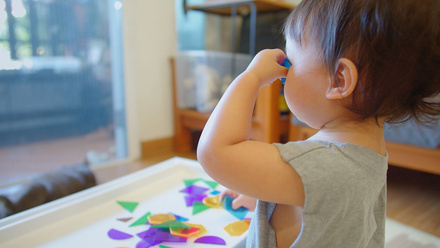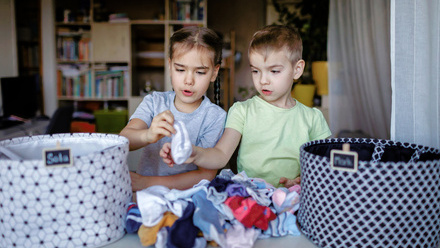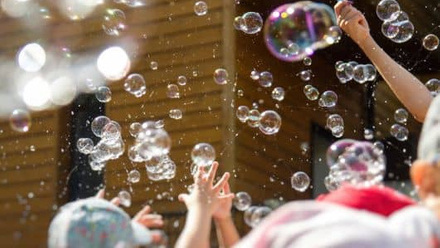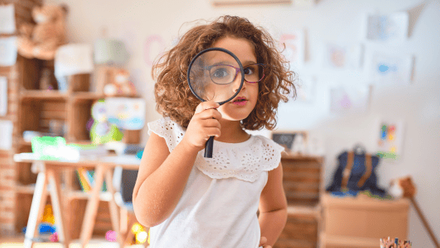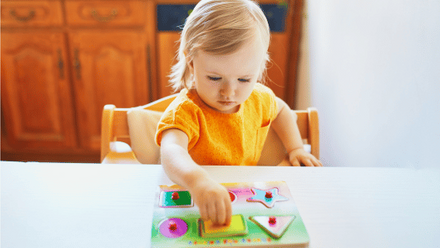How to support early numeracy through block play
When we think of early education and care, one of the most vivid images brings to mind bold coloured wooden bricks, stamped with initial letters and stacked haphazardly into a tower.
Block play is a timeless material within the early education and care sector, and for good reason! This versatile, hardy and dynamic resource has been regarded as a must-have in the playroom for decades because of its extensive opportunities to support learning and development.
This learning workout will look at how we can use block play specifically to develop early numeracy skills, across the curriculum.
What is block play?
Block play is exactly what it implies: exploratory learning through playing with blocks. It’s more often than not unstructured, open-ended and child-led play, which means there is no pre-set agenda or learning outcome. Children are free to play for as long or as little as they like with a whole array of ideas to try out.
Even the blocks themselves are free to be whatever they want! Traditional block play uses small wooden blocks, often in different colours and a variety of standard shapes. Other blocks might be more tactical and softer, which is particularly useful if your children are exploring trajectory schemas and risky play.
Block play is very versatile, which means it has loads of benefits both for children and staff. In this learning workout, we are looking specifically at how we can use this fabulous resource to encourage early numeracy skills, but it is important to think about the range of uses across the curriculum.
Just all play-based learning, there are a variety of outcomes to our play that aren’t necessarily the priority outcome. Block play can be used to develop specific ‘content knowledge’ – in maths, this might look like counting cardinal numbers (e.g., 1, 2, 3, 4, 5) or recalling colours. But, it also allows great opportunities for developing transferrable skills and metacognitive ability, such as:
- communication with others
- problem-solving skills
- critical thinking
- emotional regulation.
What we see happening when a child is playing with blocks and bricks is just the tip of the iceberg to a vast amount of development beneath the surface of the activity at hand.
So, how do we facilitate early numeracy through our block play provision? Continuous provisions are ones that are constantly available to children throughout the day in settings and can be accessed with open-ended, unstructured play time. Blocks are a popular choice for continuous provision because of their durability and accessibility to all, regardless of age or development stage.
However, continuous provisions sometimes need a bit of renovation to keep young minds stimulated. Enhancing provisions are ‘top-ups’ to the basic resource that allows a new direction of creativity and possibilities to arise. They are also useful for ‘guiding’ objectives in play – whilst the provision is still open-ended, enhancing provisions allow activities to focus on a theme or area of learning more than others. Here are some of the ways you could expand on your block play to increase opportunities for early numeracy learning.
Weighing station
Talking about weights is a good way to introduce concepts of comparison, measurement and number into daily practice. Digital scales can be used to show number formations but tipping scales allow visual representation of complex comparisons like “heavier” and “lighter”.
Copying patterns
Using different shapes and colours within block play can create a brilliant space for thinking about patterns, as well as their similarities and differences. Play mats can be used to prompt children in identifying shapes and recalling patterns, or making their own to explore repetition and rotation.
Roleplay shops
Shop play can be an interesting way to incorporate cultural understanding and knowledge of the world at the same time as using maths skills, which really helps to consolidate understanding of how much we use numeracy and why it is useful to learn.
The addition of a till, or a basket, and representation of coins can be a simple way to enhance your block play in a creative way, utilising children’s imagination through loose parts play and developing social skills for their understanding of the world around them, too.
Key takeaway
A resource that has been used for centuries in early education and care, block play incorporates an array of skills to encourage children to make meaningful connections and value through their play.
Remember, there is no right or wrong way with open-ended play so, whilst these suggestions offer some ways to encourage mathematical thinking in the continuous provision, the possibilities for learning are endless.
There are many other uses for these bricks of joy so look out for more suggestions in our member resources!


